Jump to:
Micro locs are one of the trendiest natural hairstyles you can wear this year. We’ll cover what they are, why you’ll see them everywhere this year, some unique ways to wear them, and things to consider before rocking them.
Considering Wearing Micro Locs?
Micro locs have deep tribal roots, but this style has become one of the most versatile and wearable versions of traditional dreadlocks for men and women all over the globe. Protective, attractive, and unique, micro locs should be on your list of natural hairstyles to try.
We’re exploring micro locs from every angle in this jam-packed style guide. We’ll talk about the roots (pun intended) of this traditional hairstyle, the benefits and drawbacks of rocking micro dreadlocks, and things to consider before you visit a loctician.
You’ll gather a little inspiration along the way with photos of micro locs on men and women, too. It’s all here in our style guide – keep reading to learn all there is to know about these unique, tiny dreadlocks!
What Are Micro Locs?
Micro locs (or microlocs) are the smallest form of dreadlocks. They are usually created using the interlocking tool and technique, which creates instant micro locs. Other ways to start micro locs include two-strand twists, micro box braids, and finger coils.
These styles are left in place for a few months to allow the hair to naturally begin to mat and lock up into the protective dreadlock style you know and love.
The key to starting micro locs (without using the interlocking technique) is choosing a technique that allows you to create very small sections of hair. Keeping the starter sections small creates a smaller dreadlock and the iconic look of micro locs.
The Tribal Roots of Micro Locs
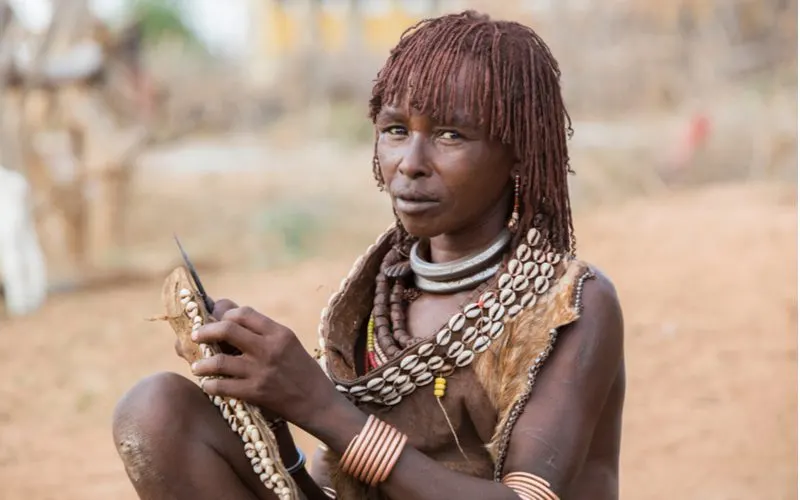
Dejonchkeere/Shutterstock
Micro locs are popular worldwide today, but this style originated with African tribes. The people of the Hamar tribe in Ethiopia are generally credited as the creators of microlocs.
While other African tribes were creating their own versions of larger, more traditional dreadlocks, the Hamar tribe created micro locs as a visual identifier for their tribe members.
The Hamar micro locs were easily distinguished from other tribes’ dreads as they were colored with bright red clay (mud) and butter to create a striking hue.
Other tribes used similar techniques, with the Himba tribe in Namibia using the same red mud and butter to color their locs. Although their locs were similarly colored to the Hamar tribes’, the Himba tribe were known for wearing larger versions of the micro locs.
Micro Locs vs. Sisterlocks: What’s the Difference?
Micro locs are often confused with sisterlocks, which is a very similar and nearly identical style. However, sisterlocks are always created with a special interlocking tool and locticians use symmetrical, precise grids to create the locs.
Sisterlocks must be installed by a trained and certified Sisterlocks™ consultant. This limits the number of locticians who can legally install Sisterlocks and makes the price of their installation much more expensive.
It’s also difficult to find a certified Sisterlocks consultant in some areas – another reason micro locs are often preferred over this type of loc.
Since microlocs don’t require a time-consuming symmetrical grid in the hair for installation, can be installed with starter techniques like twists and braids, don’t require a certified consultant, and can generally be done by any experienced loctician, they’re the more popular choice.
Micro Loc Pros and Cons
Micro locs seem to be the best of both worlds – the versatility of free-flowing hair with the protective nature and easy care of dreadlocks. But will these tiny dreadlocks be the right choice for you? Take a look at the pros and cons to find out.
Micro Locs Pros
- Versatile for styling: Micro locs more closely mimic free-flowing hair than other types of thicker or larger locs. This makes them the most versatile loc choice in terms of styling. You can do any hairstyle with these tiny dreadlocks, from wearing them down and loose to polished updos and trendy half-up styles.
- More accessibility: Anyone with experience installing or starting dreadlocks can create micro locs, making them a very accessible style that you can get anywhere. Unlike Sisterlocks™, these small locs don’t require certified consultants for installation and can be created without the use of a special interlocking tool. This makes self-installation possible – perfect if you’re in a rural area or there are no locticians near you!
- Affordable installation and maintenance: Micro locs are cheaper to install and maintain than the very similar Sisterlocks. Since installation takes less time without the use of a symmetrical grid, you’ll spend less to get micro locs and maintenance (re-tightening) is more affordable, too. Since this is a long-term hairstyle, affordability is a major benefit.
- More lightweight and less scalp tension: If you’ve tried larger dreadlocks in the past and found them to be too heavy or if you have a tender scalp, microlocs are the better choice. Each loc is smaller and more lightweight, so there’s less tension and tugging on each section of your scalp – even when the locs are long or worn up. This can also help prevent traction alopecia, or baldness stemming from too-tight or too-heavy hairstyles.
Micro Locs Cons
- Time-consuming: Since these dreadlocks are the smallest version out there, you have to create more sections which takes more time. Whether you’re using the interlocking method for instant locs or a starter technique like twists, braids, or coils, it’s going to take a lot of time to finish sectioning and locking your hair into sections this tiny. Expect them to take anywhere from 6-20 hours to install with the interlocking technique and 6 months+ for locs started with braids, twists, or coils.
- More expensive than traditional dreadlocks: While the micro version is cheaper to install and maintain than Sisterlocks, they’re more expensive than traditional, thicker dreadlocks. This is because more sections are required during installation and the work is a lot more time-consuming and labor intensive. With traditional dreadlocks, there are 40-60 individual locs on the head. With micro locs, there are generally somewhere between 150 and 300+, so locticians have to charge more for the increased labor and time.
- Can be fragile if too small: While smallness is a key feature of microlocs, installing them too small can make them fragile and easy to split, fray, or break. Having a professional install them can help you avoid this problem.
10 Micro Loc Ideas for Men and Women in 2025
From the tribal roots of this functional and protective hairstyle to modern, trendy versions, there’s a micro loc look on this list that will inspire you! Check out the different ways to wear these tiny dreadlocks with style.
1. Long Micro Locs in Low Ponytail
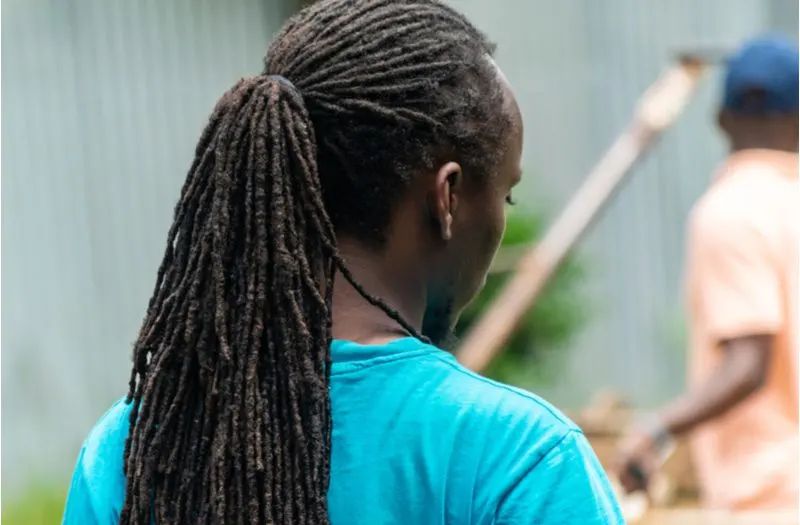
Stanley Nijihia/Shutterstock
Since micro locs are so small, there are more of them. More locs means more strands dangling in your face – but this simple low ponytail is the ticket to keeping long locs out of your way!
2. Asymmetrical Ombre Micro Locs
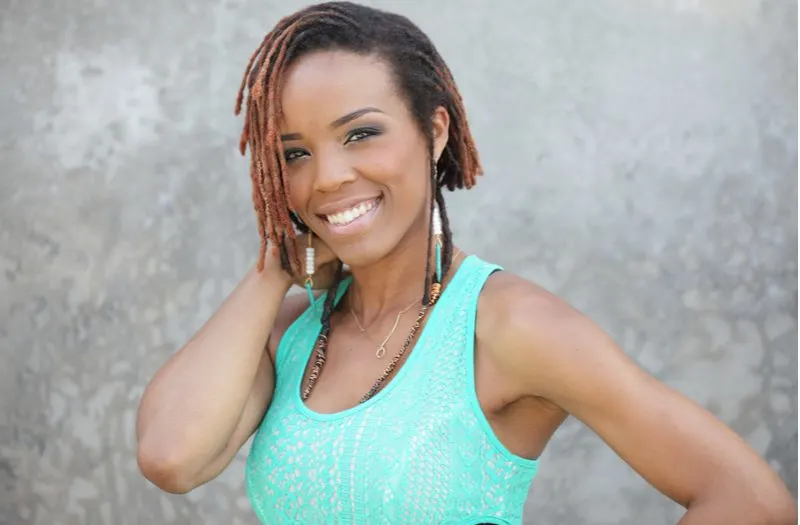
Felix Mizioznikov/Shutterstock
With longer locs on one side and a few long tendrils wrapped with copper wire, this micro loc look is unique and two-toned. This style features dark roots and bright coppery color from the midshaft to ends.
3. Micro Locs With Mid Drop Fade

Maradon 333/Shutterstock
This is such a trendy way to rock locs of the micro variety. He’s got a mid drop fade that dips lower in the back and is shaved down to the skin (bald fade) on the sides and back. The longer top is knotted in micro locs to add texture and instant style.
4. Half-Up Long Micro Loc Ringlets
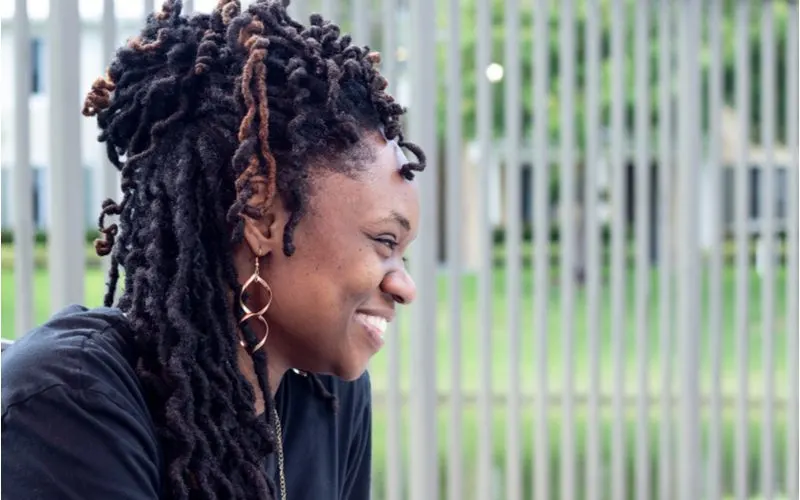
Michae Allen/Shutterstock
Pin curls and twist techniques can create gorgeous, tight curls in dreadlocked hair. Here, some of her locs are slightly larger than your average micro loc, but the overall effect is stunning. Pull the top half up and strategically pin a few curls in place to show off this beautiful texture.
5. Short Micro Locs

Krakenimages.com/Shutterstock
Here’s a great option for short to medium-length hair. Short locs keep you cool, add interesting texture, and can be parted and styled to suit your mood for the day. A basic central part is shown here, but a side part would offer a new and different look!
6. Dyed Micro Curly Locs

Kyle Lee/Shutterstock
This is one of our favorite micro loc looks! Curly locs really show off the tiny size of these miniature dreadlocks and mimic the look of free-flowing hair.
7. Long Micro Locs

Vadym Pastukh/Shutterstock
Micro dreadlocks are a popular choice for men and women because they’re easy to manage and give you the same styling freedom as free-flowing hair with the added bonus of natural hair protection.
These long locs can be pulled up into a ponytail when you need them out of your way, but we love the look of wearing them down to show them off!
8. Pin Curled Micro Locs
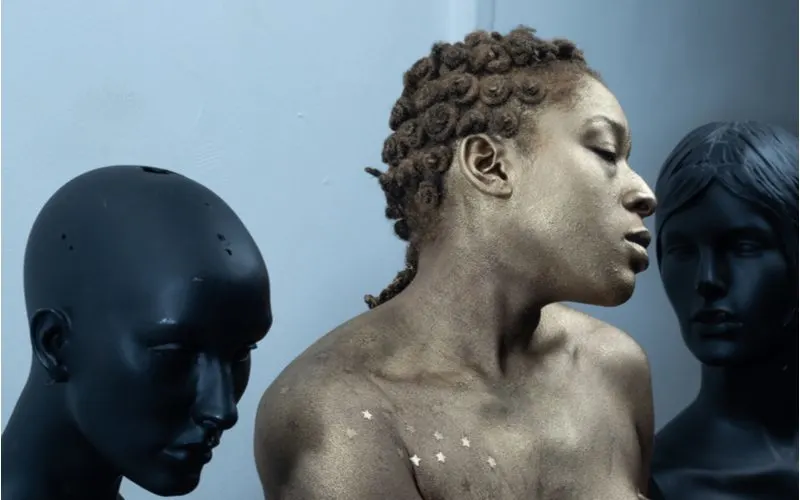
Michae Allen/Shutterstock
Coating yourself in metallic paint is 100% optional, but what about these beautiful pin curled locs? The smaller size of these dreadlocks makes them perfect for trying styles like pin curls, which traditionally use small sections of hair. The best part: When you take the pin curls down, your locs will have a gorgeous, curly texture!
9. Two Strand Twist Starter Locs

Mangostar/Shutterstock
Two-strand twists are one of the most popular ways to start or install micro locs. Over time, the twists will begin to mat together and lock up. Make your twists small enough to qualify as micro locs and enjoy the pretty style as your locs begin to take shape!
10. Traditional Hamar Tribal Micro Locs
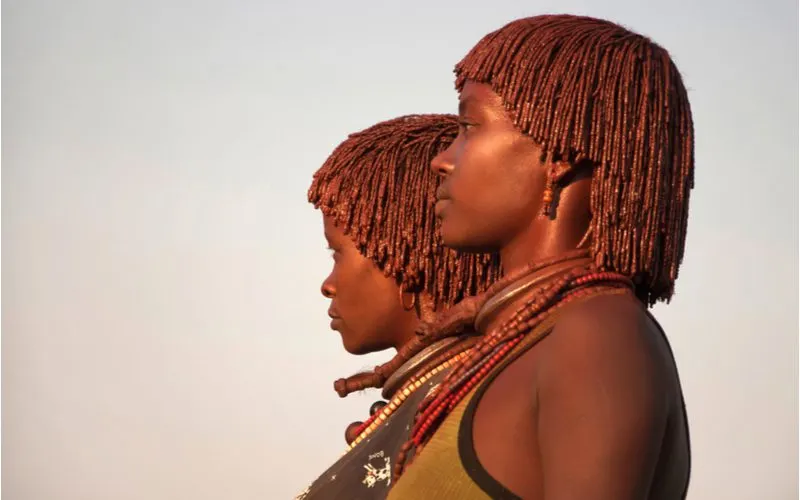
Piu_Piu/Shutterstock
These uniquely colored micro locs are a traditional hairstyle for the Hamar tribe in Ethiopia. Throughout history, the tribe has used red mud and butter in the locking technique to give these tribal locs a unique color and texture that locks tightly.
Read Next: Tribal Braids
Things to Consider
Think micro locs are the perfect protective hairstyle for you? Before you call a loctician and schedule an appointment, you should think about these factors to ensure this style will be a good fit for your style and budget.
- Microlocs cost: You can expect to pay somewhere between $200 and $600 to get microlocs installed by a loctician. You can always do these small dreadlocks yourself, but the interlocking technique used by professionals is time-consuming and you may make mistakes as you learn. Doing other starter techniques (braids, coils, or twists) may be the best option for DIYers, but remember that you won’t get instant locs with these methods.
- Maintenance cost: You can expect to pay a professional somewhere between $50 and $80 on average for micro loc maintenance and re-tightening. This is necessary every 4-8 weeks to keep your roots tight and to prevent the ends from splitting or fraying. It’s important to factor in the added maintenance costs upfront so you’re not taken by surprise later!
- Added hair volume: There are more micro locs per square inch of your scalp than with traditional dreads and the locs tend to “stack” up on top of one another. This creates a more voluminous look than traditional dreadlocks, so make sure you’ve browsed plenty of photos of microlocs and like the high-volume look before you commit.
- Long-term commitment: Getting microlocs is a long-term commitment, just like with traditional dreads. It’s not impossible to remove them, but it’s not easy, either. Don’t plan on getting this version of dreads unless you’re sure you’re ready to commit for a few years.
- Starter installation techniques take time to fade: If you have your microlocs installed without the interlocking technique, you’ll have to use twists, finger coils, or braids to create the base for the locs to form. These take months, even a year plus, to “fade” out of the style and start looking more like traditional locs. Keep this in mind, especially if you’re impatient!
Are Micro Locs Right for You?
So there you have it – can you see why micro locs are such a popular and enduring hairstyle for natural hair? Yes, they can be time-consuming and a little more expensive to install than traditional dreads. But they’re also a lot more versatile and more closely mimic the look and feel of free-flowing hair.
For many men and women, micro locs are the best long-term hairstyle choice because you can do so much with them. As long as you carefully consider the pros and cons and connect with a skilled loctician, you’re going to love your new micro-sized dreads.
